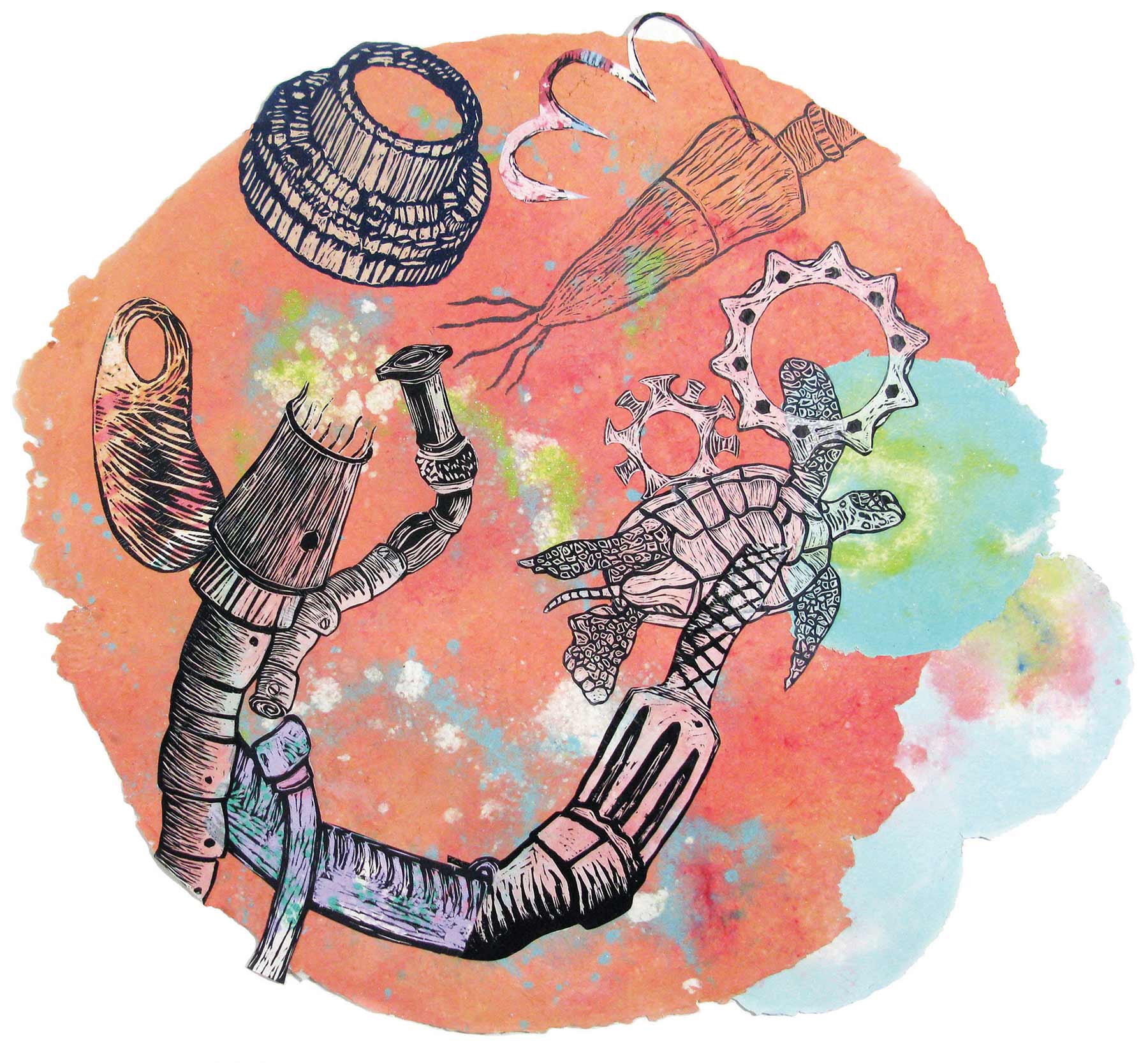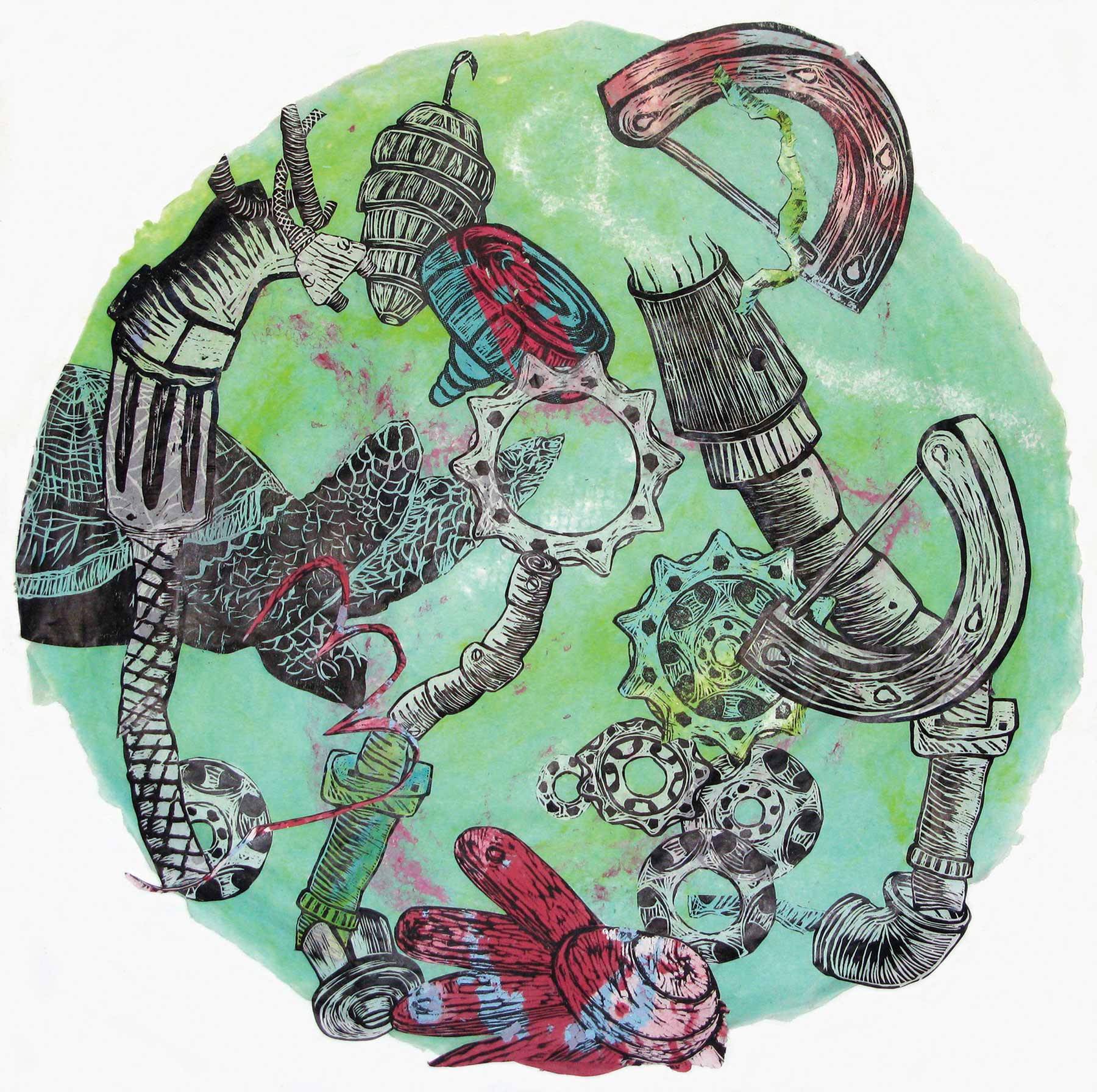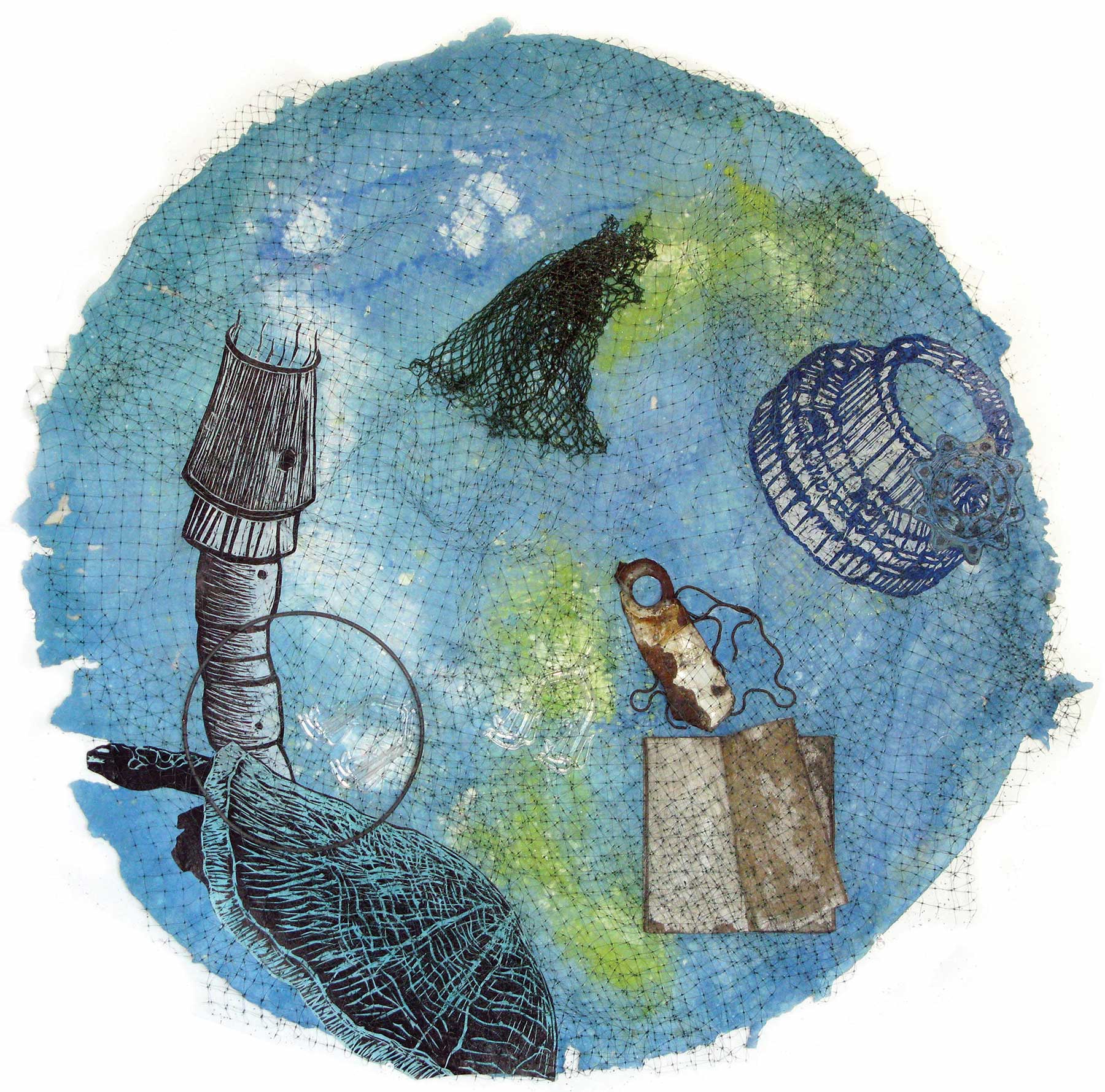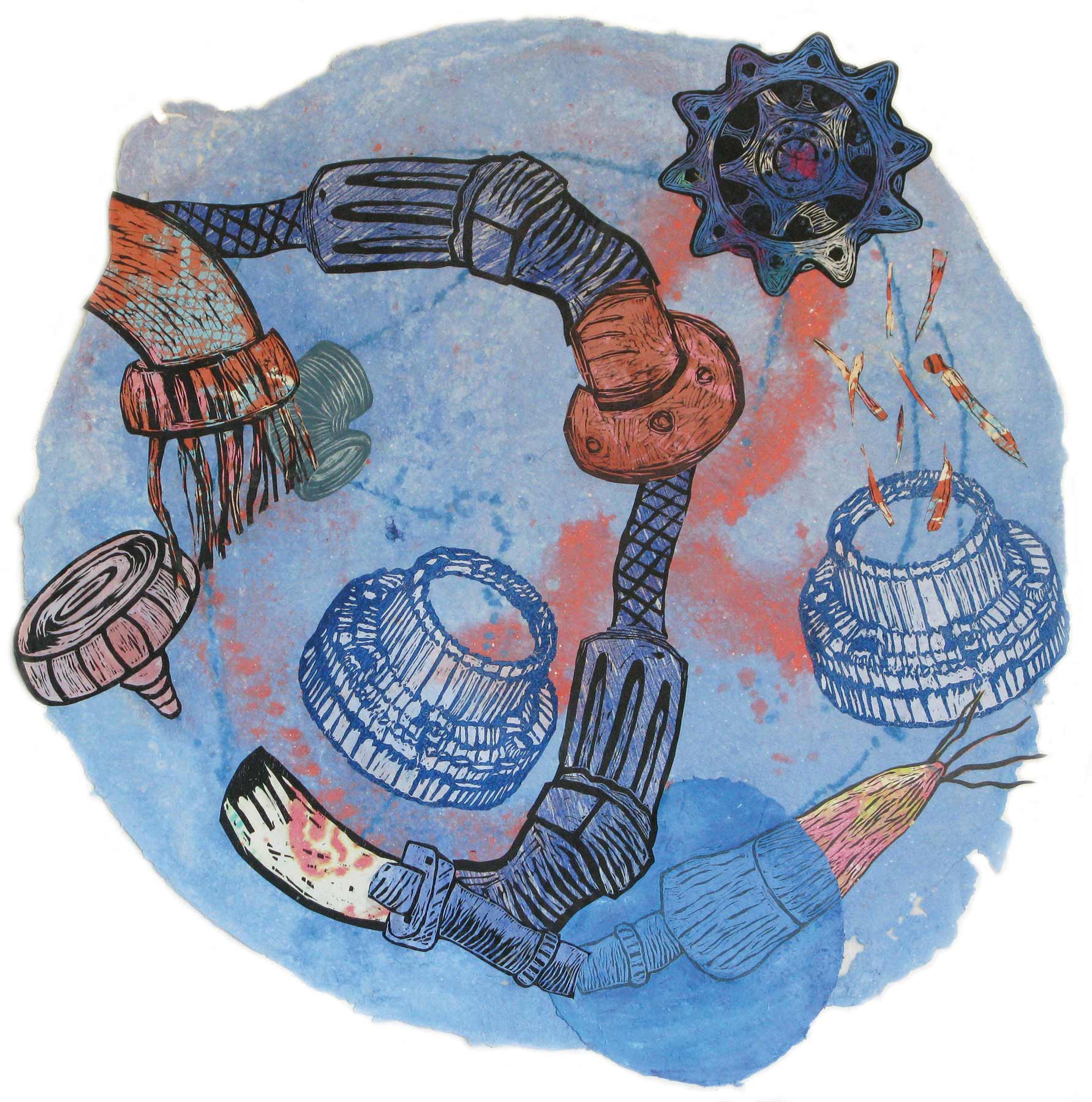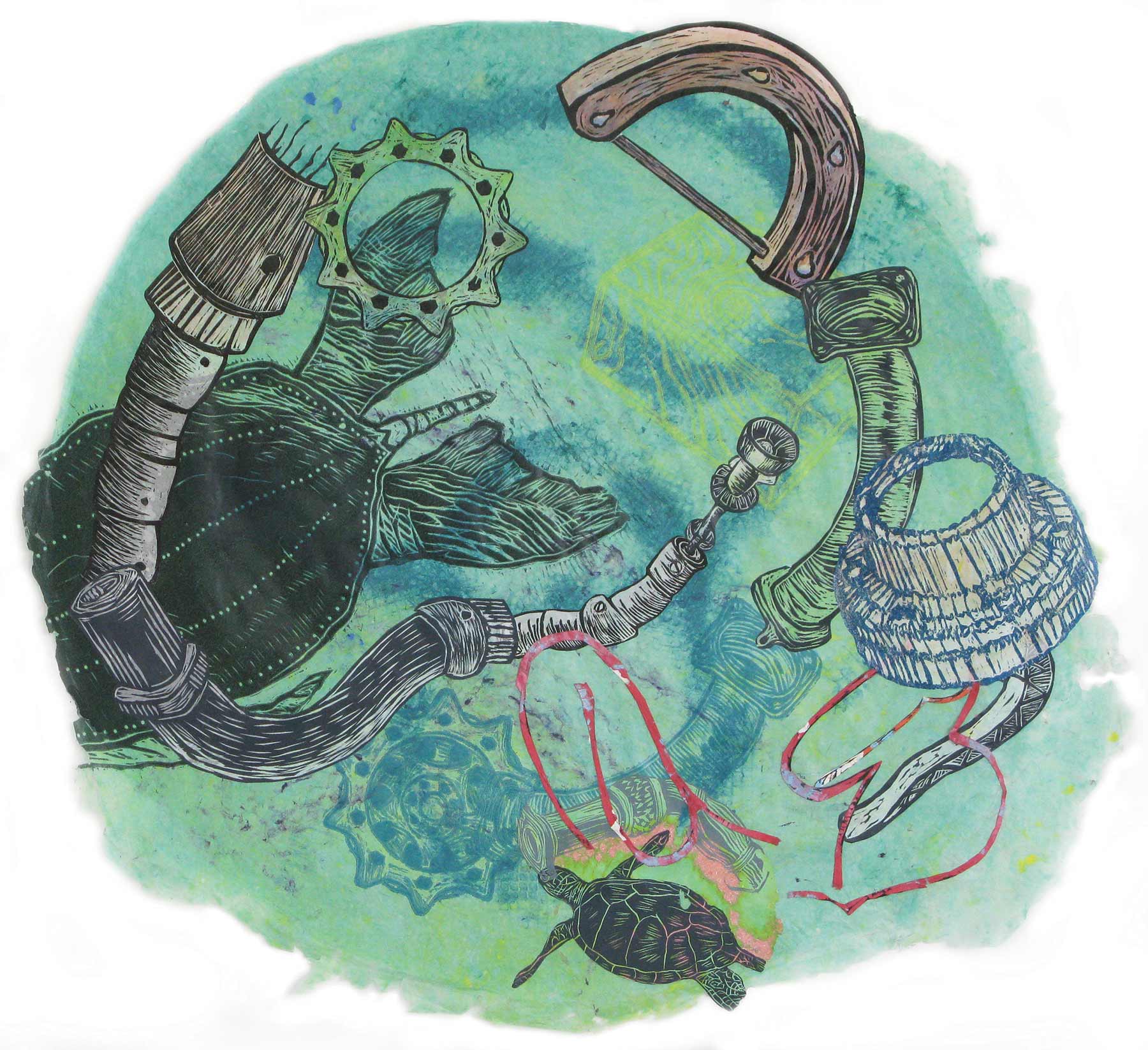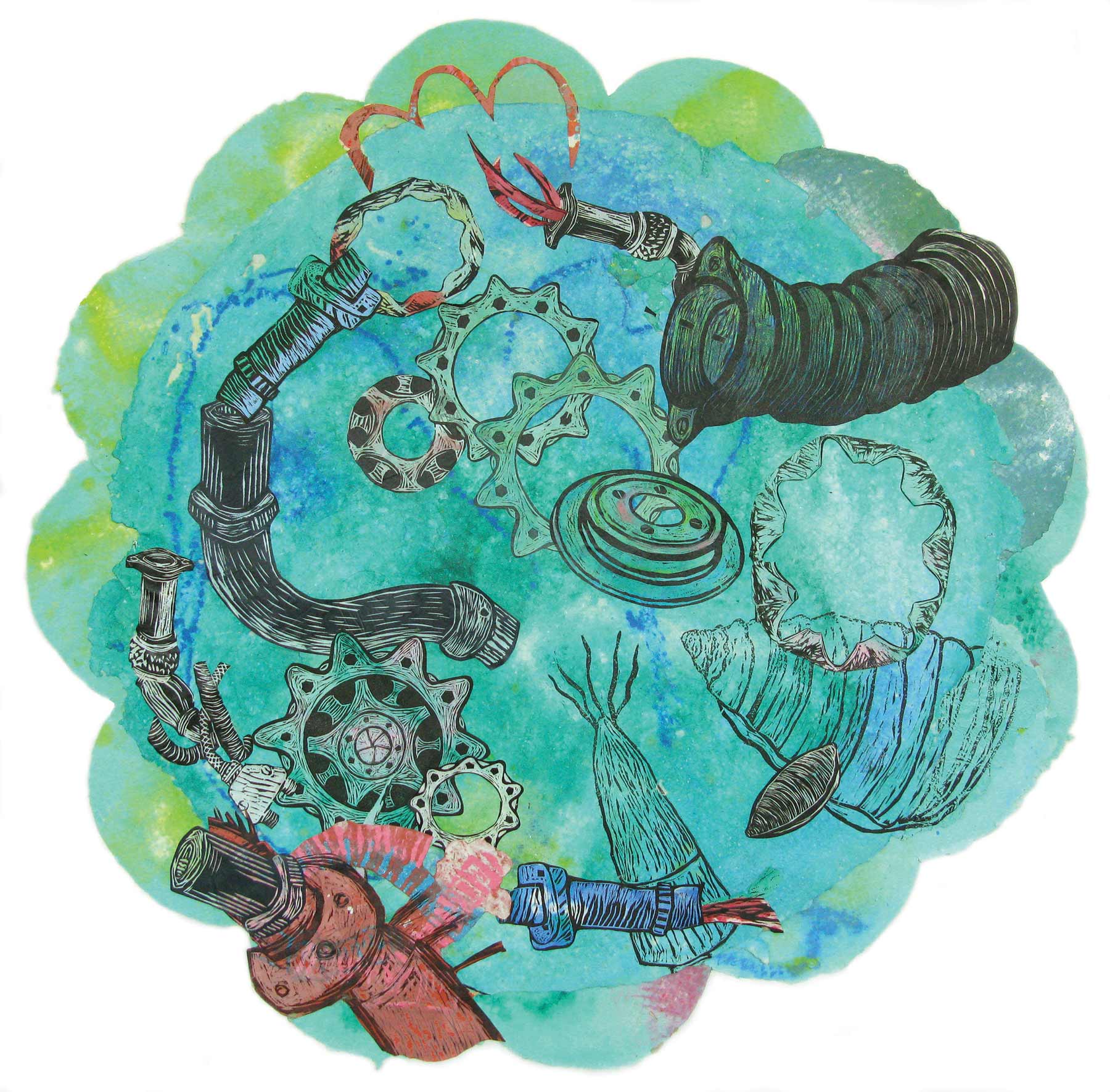
Marilyn Propp, Kenosha
2018–19 RAM Artist Fellowship Award Recipient
Raised in upstate New York, Marilyn Propp is an artist/educator whose work has been exhibited in museums and commercial and university galleries throughout the US and Mexico. Propp attended Skowhegan School of Painting & Sculpture, Brooklyn Museum Art School, Provincetown Workshop, and San Francisco Art Institute’s pre-MFA program; and holds a BA from the University of Pennsylvania and an MA from the University of Missouri–Kansas City. She has undertaken Residencies/Visiting Artist positions in, among others, Jentel, Wyoming; Cill Rialaig, Ireland; and Universidad Veracruzana, Mexico.
Propp has received numerous grants and awards, including the Illinois Arts Council Finalist Award and an Adolph and Esther Gottlieb Foundation Grant. Her work can be found in many public and private collections including the Summer Palace, Saudi Arabia, the Hallmark Collection, and the AT&T Collection, Kansas City, Missouri.
In 1990, David Jones and Propp founded Anchor Graphics in Chicago. She relocated in 2016 to Kenosha, Wisconsin, where she co-founded the Center for Collaborative Research. CCR’s Press on Wheels takes printmaking and papermaking into the community throughout the Midwest region. She is currently adjunct faculty at Carthage College.
Artist Statement
My series Notes from the Sea addresses the clash/coexistence between the industrial and natural worlds where industrial debris, machine parts, and marine life are entangled or morph into one another. Fueled by my concerns about environmentally destructive practices—like the devastation of coral reefs, plastic that entangles and suffocates marine life, and oil spills that devastate land and sea—I use paper, print, and collage to present images of beauty while offering reflections on destruction.
In my work, handmade paper reflects both the undersea world and the way paper itself is made: a watery material in which wet pulp is stirred, formed, and pressed. Pigmented pulp creates a textured and painterly surface, contrasting the texture and color of the paper with the crispness and layering of the prints. Installed, they sit away from the wall, appearing to float, creating an impression of underwater glimpses. With their trailing deckles they evoke the movement of sea life, often suggesting filtered sunlight, as though looking up through the water from below. Ultimately, the work is about mending the world.
Marilyn Propp, Kenosha
2018–19 RAM Artist Fellowship Award Recipient
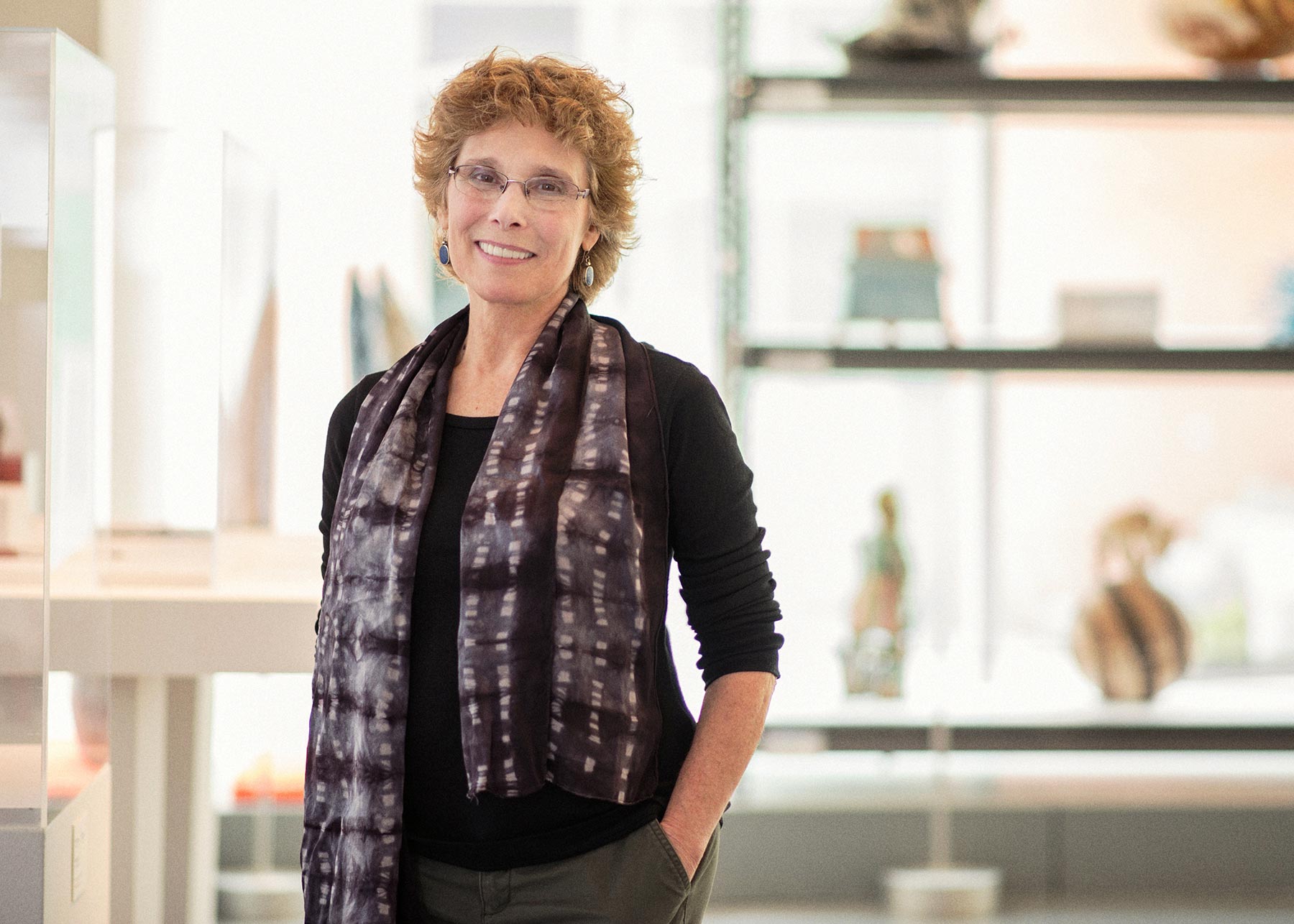
Photography: Camela Langendorf, Varitay Studios
Raised in upstate New York, Marilyn Propp is an artist/educator whose work has been exhibited in museums and commercial and university galleries throughout the US and Mexico. Propp attended Skowhegan School of Painting & Sculpture, Brooklyn Museum Art School, Provincetown Workshop, and San Francisco Art Institute’s pre-MFA program; and holds a BA from the University of Pennsylvania and an MA from the University of Missouri–Kansas City. She has undertaken Residencies/Visiting Artist positions in, among others, Jentel, Wyoming; Cill Rialaig, Ireland; and Universidad Veracruzana, Mexico.
Propp has received numerous grants and awards, including the Illinois Arts Council Finalist Award and an Adolph and Esther Gottlieb Foundation Grant. Her work can be found in many public and private collections including the Summer Palace, Saudi Arabia, the Hallmark Collection, and the AT&T Collection, Kansas City, Missouri.
In 1990, David Jones and Propp founded Anchor Graphics in Chicago. She relocated in 2016 to Kenosha, Wisconsin, where she co-founded the Center for Collaborative Research. CCR’s Press on Wheels takes printmaking and papermaking into the community throughout the Midwest region. She is currently adjunct faculty at Carthage College.
Artist Statement
My series Notes from the Sea addresses the clash/coexistence between the industrial and natural worlds where industrial debris, machine parts, and marine life are entangled or morph into one another. Fueled by my concerns about environmentally destructive practices—like the devastation of coral reefs, plastic that entangles and suffocates marine life, and oil spills that devastate land and sea—I use paper, print, and collage to present images of beauty while offering reflections on destruction.
In my work, handmade paper reflects both the undersea world and the way paper itself is made: a watery material in which wet pulp is stirred, formed, and pressed. Pigmented pulp creates a textured and painterly surface, contrasting the texture and color of the paper with the crispness and layering of the prints. Installed, they sit away from the wall, appearing to float, creating an impression of underwater glimpses. With their trailing deckles they evoke the movement of sea life, often suggesting filtered sunlight, as though looking up through the water from below. Ultimately, the work is about mending the world.
Interview with the Artist, January 2021
Would you please describe your work—what materials you use; what subject matters you explore?
My work addresses the clash/coexistence between the industrial and the natural worlds. Industrial debris, machine parts, and marine life are entangled or morph into one another. My primary media are handmade paper and relief prints. I make large round sheets of both cotton and abaca paper, which I pigment during the formation process. When dry, I use them to create woodblock prints that I then collage with prints on either translucent or other pigmented handmade paper. Recently, I’ve also begun to add three-dimensional elements.
How often are you in your studio? Do you work outside of your studio much or at all?
I try to be in my studio every day, but when I’m teaching it might be more like three times a week. When I go for walks I’m always on the lookout for metal or plastic debris that could be used in my work.
What inspires you most these days? But also what do you go to bed thinking about most nights?
I’m inspired by the new paper I created this past summer. It has so many possibilities. At night, I think about the piece I’m currently working on. The shapes and movement within the paper dictate what prints are needed, where I will place them, and if I need to cut new blocks.
Why the RAM Artist Fellowship? Since we are midway through the process, can you assess how you are feeling at this point? Are you where you thought you would be? Have your plans changed since the fellowship year started?
I learned of the RAM Artist Fellowship from my colleagues at Carthage College, previous Fellowship recipients, Diane Levesque and Lisa Bigalke. Upon researching it, I thought it would be a perfect way to share my work, a way to become a visible part of the southeastern Wisconsin arts community. Now at the midway point, I feel that the Fellowship has moved my work further than anticipated (although I had planned to have more work finished by now—teaching in the fall and all of January kept me from working as much as desired in the studio). Luckily, this past summer my intern from Carthage College assisted me in making 12 large round sheets of cotton and abaca paper and, later in the summer, I made 15 small and thin, round sheets of very translucent abaca paper. The change in my original plans occurred when some of the large paper sheets dried with a very pronounced textural pattern (without a large paper press to flatten them, I improvised and dried them on the back porch). This development has led me to use stitching to explore a more three-dimensional aspect. Also, the smaller translucent circles will possibly be stitched together and hung in front of a light source. This is a whole new direction for me.
Sample of Work
Click/tap an image for more information


